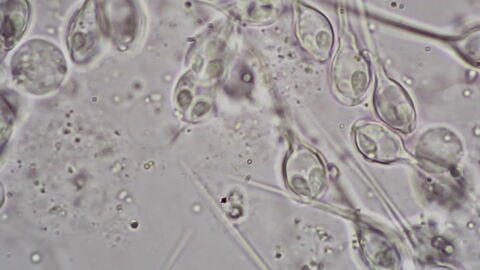A mane is undoubtedly one of a lion's most distinctive features. And yet, a lion's mane is currently at the centre of a phenomenon specialists have had trouble explaining. But what's so special about this mane? Well, this mass of hair didn't grow on a male, as is usually expected, but on a female - 18-year-old lioness Bridget, who currently resides at the Oklahoma City Zoo, in the United States.
Discover our latest podcast
As the establishment explained in a post, this phenomenon started in March 2017 and continued until November of that year. While the lioness initially had some long hairs on her cheeks, they have now grown, forming a kind of collar of hair from her ears to her bust. At this time, the cause of this "mini-mane," as the zoo's staff call it, remains a mystery.
According to the establishment's post, Bridget's sister, Tia, also 18 years old, did not experience this, unlike Hubert, the 6-year-old male of the zoo, who has a thick, dark mane. Tests are currently underway to try to explain why this hair grew on Bridget. But while this phenomenon may be surprising, it is far from unprecedented.
Other females with manes
Male lions start to grow a mane around the age of one, when testosterone production increases in their bodies. As a rule, females don't have them, but specialists have already seen lionesses with large manes. Indeed, in Botswana, in the Okavango Delta, they spotted no less than five, whose case was brought to light in 2016.
Upon observing one of them for two years, British scientists realized that the lioness not only had a mane, she also had typically male behaviour patterns, such as marking territory, roaring, even attempting to mate with other females. Features that researchers have attributed to - but couldn't confirm - an abnormal increase in testosterone.
There was another case that is more similar to Bridget's, in South Africa. In 2011, a 13-year-old lioness from the Pretoria Zoo also started growing a mane. After examination, veterinarians discovered that there was an abnormality in her ovaries. They contained cells that are normally present in lions' testicles and lead to an abnormal production of testosterone.
Once the anomaly was resolved, the mane of the lioness named Emma gradually disappeared. Could Bridget be suffering from a similar problem? The question remains unanswered, but there are several leads.
A genetic anomaly or a benign tumor, perhaps?
In the case of the Botswana lionesses, studies pointed to the fact that the excess testosterone was due to a genetic mutation the females all had in common. A mutation that is believed to have occurred in the embryos during pregnancy or conception, Luke Hunter, the president of conservation NGO Panthera, told National Geographic.
Bridget's case could, however, be more similar to that of the South African lioness. Indeed, she showed no signs of this anomaly until the age of 18. In addition, similarly to the South African female, the lioness has given birth in the past, in 2007, while those in Botswana are suspected of being infertile.
Veterinarians have come up with another hypothesis: Bridget could suffer from a benign tumor located in her adrenal glands or pituitary gland, the glands that regulate hormones like testosterone. Research teams performed blood tests on the lioness and her sister to compare the results and highlight any anomalies they may find.
In the meantime, they continued to monitor Bridget, and said that she still looked healthy and that her "mini-mane" did not seem to be affecting her behaviour.
After conducting a few tests, veterinarians at the Oklahoma Zoo managed to crack Bridget's case. The female has abnormally high levels of two hormones: cortisol and androstenedione. Both are produced by the adrenal glands and could explain mane growth in a female.
In humans and lions, cortisol is responsible for the regulation of certain functions such as metabolism and the immune system. Androstenedione, is a precursor of sex hormones, including testosterone, and may be responsible for the development of male characters such as a beard, or a mane in lions.
According to her lab results, Bridget's cortisol levels were 2.5 times higher than her sister's, and her androstenedione levels were seven times higher. Veterinarians believe that the female may have developed a small tumour near an adrenal gland, which disrupted her hormone production. However, this did not cause Bridget any behavioural changes or health problems.















